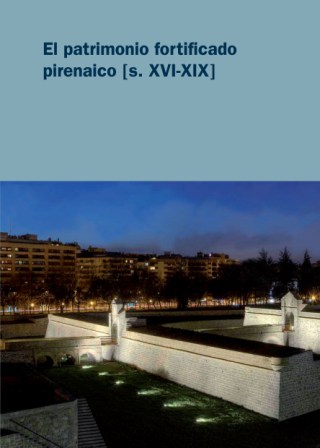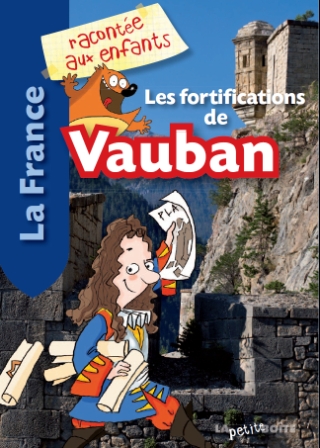11 February
lecture series
DISSEMINATION AND COMMUNICATION OF CULTURAL HERITAGE
Communicating fortified heritage: its dissemination in the 21st century
Ms. Esther Elizalde Marquina
Chair of Navarrese Heritage and Art
The fortified heritage has generalised protection in the Decree of 22 April 1949 on the protection of Spanish castles, which includes any historic fortified building, regardless of its chronology or artistic value, being considered BIC (Bienes de Interés Cultural) and therefore enjoying the highest level of protection, by virtue of Law 16/1985, of 25 June, on Spanish Historical Heritage.
In 1997, this legal protection was accompanied by the implementation of the Military Architecture Action Programme. Later, from the conviction that attention to defensive architectural heritage was still insufficient, the need to carry out a methodological review and establish guidelines for the partnership between the Public Administrations was considered. To this end, in 2006, the high school del Patrimonio Cultural de España (IPCE) convened a Technical conference on Castles and Defensive Architecture in Spain, in which the Autonomous Communities took part. The result of the meeting was the Charter of Baños de la Encina for the conservation of Defensive Architecture in Spain, approved in Potes (Cantabria) by the committee of Historical Heritage on 30 October 2006, whose recommendations form the basis of the National Plan for Defensive Architecture.
One of the conclusions of these conference included in this plan was that: "Defensive architecture is a fundamental instrument for the knowledge and development of population settlements. Since beyond its strict territorial dimension, it also affects the dynamics of the urban development ".
Therefore, although the main concern throughout the 20th century has been the protection, restoration and conservation of fortified heritage, the time came when the importance lay in communicating and publicising this heritage that surrounds us in order to involve citizens, involve them in their environment and show the relevance that defensive architecture had in the past and could have in the future.
Currently, fortified heritage is gaining the recognition it deserves, thanks to the work of certain entities, both governmental and non-profit organisations, focused on the dissemination of its historical and artistic value. Thus, as examples on a national level we can point to the high school de Historia y Cultura Militar, dependent on the Ministry of Defence, the association Española de Amigos de los Castillos, the Fundación Las Fortalezas Catalanas; on an international level we should not forget ICOFORT (committee International Scientific Centre on Fortifications and Military Heritage), which depends on ICOMOS, the association Vauban, the Fortress Study Group or the Fortress Explorer Society, among others; and international projects such as ATFORT (Atelier European Fortresses), to name but a few, without forgetting project FORTIUS Pamplona-Bayona: Tourist and cultural enhancement of the fortified heritage of Pamplona and Bayonne.

Fortifications of Pamplona.
Walled cities: places to live, visit and innovate
Publication of the Pamplona City Council in 2013, collecting the lecture series that under the aforementioned degree scroll was given in October-November 2012 in Pamplona.

Pyrenean fortified heritage (16th-19th century).
Published by Pamplona City Council in 2014, compiling the lecture series which, under the aforementioned degree scroll , was given in October-November 2013.
These organisations have been promoting different methods of disseminating our rich fortified heritage, from the more conventional ones such as the organisation of Congresses, Scientific Meetings, Symposiums or Workshops, among which we highlight the following: Walled Cities and the International congress on Fortified Heritage: management and development Sustainable, held in Pamplona in 2005 and 2014, respectively. Increasingly, there are informative cycles that aim to bring military architecture closer to all audiences subject , as is the case with publications, which have increased in recent years, with a proliferation of magazines or magazines on this subject, and even greater emphasis has been placed on the essay of manuals or stories in order to attract a younger audience.

roundtable from congress International on Fortified Heritage: management and development Sustainable, held in Pamplona in October 2014.
Joao Campos, María Cruz, Víctor Echarri (moderator), Fernando Cobos and Salvador Moreno
In recent times, the creation of Interpretation Centres as an exceptional instrument both for tourists, who visit the monument itself, and for the citizens and researchers themselves, who have the possibility of rediscovering a part of their historical heritage, has increased. Several examples: International Centre for the research and Valorisation of Fortified Heritage Forte Marghera in Venice, The Fortress Builders Fortifications Interpretation Centre in Valletta, Malta.

Fortifications Interpretation Centre
Valletta, Malta
The same is true of the activities developed around these interpretation centres, whose aim is to raise awareness of the fortified heritage of the region in which they are located or of the locality itself. goal . Nowadays, the aim is to offer the visitor "unique experiences". The conventional guided tours and the activities organised around them are expanding, seeking the interrelation of the visitor with the monument, but always with respect, thus giving rise to projects such as FORTE CULTURA, which focus on a more specific cultural tourism: "fortress tourism".
However, nowadays one of the most important points for the dissemination of the Fortified Heritage, and for Cultural Heritage in general, is the use of new technologies. These allow us to attract the masses, from the instructions of data or inventories, the applications for tourist use to the web pages, the social networks, nowadays so much in vogue.

Website of the Spanish Friends of the Castles association
At final, the future lies in sharing and disseminating our knowledge and our documentary sources, making knowledge accessible to all subject members of the public and thus boosting their interest in our fortified heritage, because, as was said at the congress International Forum on Fortified Heritage: management and development Sustainable, only in this way will we achieve a LIVING fortified heritage! Because when you know what you see, you empathise with your surroundings; what you understand, you love; what you love, you protect; and what you consider your own, you defend.

Publication aimed at children: Les fortifications de Vauban, Association Vauban
